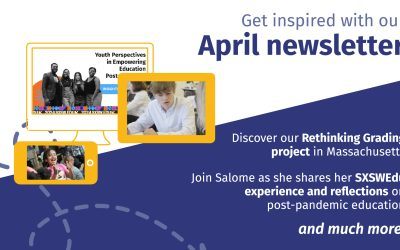While the goal is for all learners to have access to text and materials that represent, affirm, and sustain their diverse identities, it is most often not the reality. Often classrooms are limited in their resources and students are stuck with textbooks that are not only outdated, but are systematically laced with bias, promote stereotypes, center whiteness, and can be shaded by partisan politics. More current resources – articles, speeches, videos, TV shows, etc. – can also be sources that intentionally and unintentionally perpetuate narratives that harm people and devalue ways of being.
One remedy for this is to use the content at hand to help students flex their critical consciousness to interrogate and disrupt the narrative. Learners can use inquiry to uncover beliefs and agendas that are often unexamined and to expose the inaccuracies, gaps, minimization, and absence of information. Disrupting the text is a proactive way to utilize available materials, practice key learning strategies of questioning, making connections, and determining importance, AND build critical consciousness in all learners.
An important note:
This is a hack, a small disruption. It will not truly disrupt if it stands alone. And if done without an internal interrogation of biases by adults guiding the learning, it can do harm. To disrupt and lead to transformation, we must:
- Engage in honest self-exploration and take responsibility for dismantling our own biases
- Fight to build a library of resources that is distinctly anti-racist, de-centers whiteness, and centers the experiences and voices of black, Indigenous, and people of color
- Give learners space to ask questions, feel their feelings, resist.
Disrupting the text directly supports the following competencies and skills from reDesign’s Global Competency Set:
- Use Sources | Contextualize sources
- Read Critically | Analyze context, point of view, and purpose
- Learn from the Past | Engage and disrupt forms of oppression
Here are the questions.
In the graphic below, we list three sets of questions that help learners learn and practice how to read texts critically and disrupt bias: Establish the Context, Analyze the Content, and Analyze with Critical Consciousness (Freire, 1973). Your learners may already be asking these questions. For those who aren’t, with routine practice, they can learn to interrogate narratives with these questions until it becomes part of their natural inquiry process.
Interested in a downloadable version? Check out this printable 1-pager and 18”x24” poster.

Establish the context.
- When was this text written, and what was the social, economic, political climate during which the text was written?
- What is this text’s relationship to texts that came before it? Does it affirm or challenge the dominant narrative, conventional thought, and status quo?
- Who wrote this text, and what was the author/creator’s position of power in society?
- Why did the author write it? What was the intended message and who was the intended audience?
- How did the author benefit from writing this?
Analyze the content.
- Who is represented in the message? And who’s missing?
- Whose points of view and values are represented or being appealed to and whose points of view and values are missing or misrepresented?
- Was harm caused by these words/images? If so, to whom?
- Were benefits enjoyed and/or privilege granted by these words/images? If so, to whom?
Analyze with critical consciousness.
- Have any institutional, structural, or cultural forms of oppression been uncovered through a critical reading of this text? If so, how does this affirm or challenge your understanding of these forms of oppression?
- How might those with different perspectives, life experiences, or access to power respond to this text today and/or in the time it was published?
- How does your critical reading of this text intersect with your own vision for personal or communal liberation, and/or with your efforts to advocate the liberation of groups with less social, political, or economic power than you?
Join the community!
Sign up to receive our newsletter, access best-of educational resources, and stay in the know on upcoming events and learning opportunities. We hope to see you soon!




